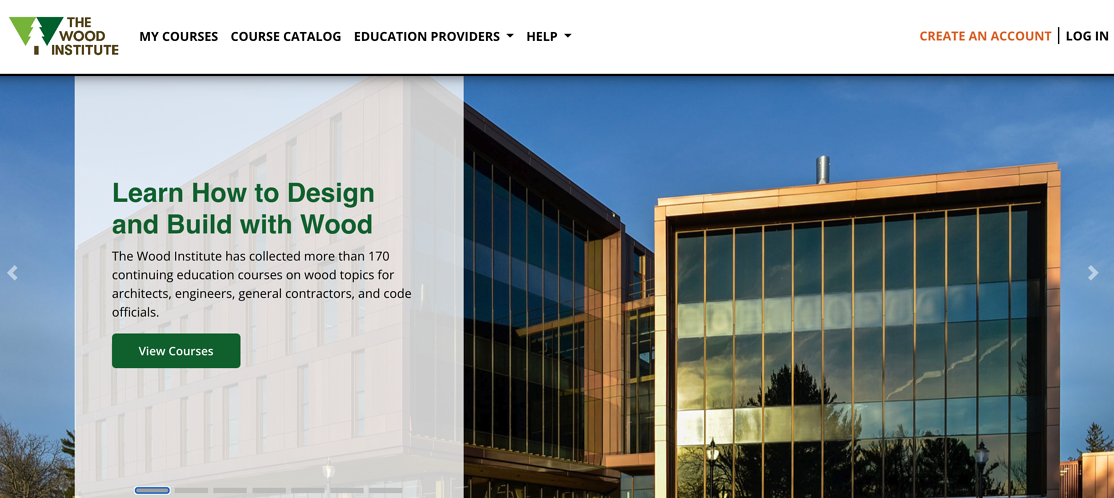HIGHLIGHTS
PROGRAM UPDATES
The AWC Celebrates Accomplishments in 2021 Annual Report WoodWorks Leads Wood Education at AIA Conference Think Wood Studio Spotlight Showcases Timber Innovator LEVER Architecture The AWC Taps New Leadership Focusing on Codes & RegulationsINDUSTRY NEWS
The State of the Nation’s Housing Monthly Housing Report Shows Large Jump in Active Listings Proposed National Juneteenth Museum Features Stunning Timber Design With Code Change, California Embraces Tall Wood Concrete Podium Reduces Opportunity to Maximize Carbon Reduction Global Emissions From Concrete Doubled Over Past Two Decades Pittsburgh Developer Chooses Wood Over Steel to Reduce Carbon Footprint Wood Towers to Enhance Wind Turbines’ Carbon BenefitsINSIGHTS ON THE COMPETITION
British Concrete Lobby Questions Wood’s Carbon BenefitsINDUSTRY RESOUCES
Virginia Tech's Monthly Housing ReportProgram Updates
The AWC Celebrates Accomplishments in 2021 Annual Report

The AWC recently published its all-digital 2021 Annual Report, which highlights its accomplishments across seven major strategic areas over the past year, including codes and standards, carbon, tall wood, and fire services engagement.
The AWC is particularly proud to report the successful conclusion of a multiyear plan to achieve fully exposed mass timber ceilings in Type IV-B construction during the International Code Council (ICC) code development process. Years in the making, this effort involved nearly all facets of the AWC’s program—its engineering team generated critical data via fire testing on cross laminated timber; its education team communicated the evidence to ICC eligible voters; and its field staff built and maintained trusting relationships and effectively countered an aggressive misinformation campaign that sought to overturn the result. The result is a code change that significantly reduces the costs of wood construction and provides architects with new, creative options to showcase wood’s beauty and create better user experiences for building occupants.
WoodWorks Leads Wood Education at AIA Conference
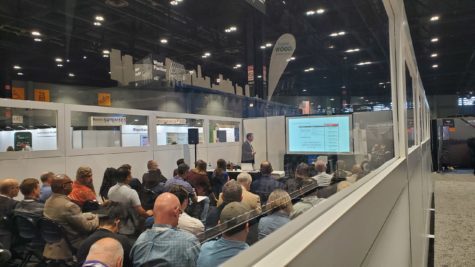
WoodWorks designed and delivered a compelling education component at the AIA Conference on Architecture 2022 in Chicago, complementing the softwood lumber industry’s overall presence at the show.
As a lead sponsor of the AIA Learning Lounge, WoodWorks had the opportunity to present on light-frame and mass timber topics to sold-out audiences during two days of education sessions. In addition to knowledge transfer, the sessions provided a great opportunity for WoodWorks to connect with and promote its expert resources and technical support offerings to 400 participants.
Topics covered during Learning Lounge sessions included:
- Mass Timber High Rises: Lessons Learned, Hartshorne Plunkard Architecture & WoodWorks
- Interior Wall & Floor Assemblies in Multifamily: Design & Details, WoodWorks
- Carbon & Cost: Evaluating the Impacts of Different Structural Systems, KL&A Engineers and Builders & WoodWorks
- Light-Frame Wood Innovation: Six-Over-Two Podium Construction, Works Progress Architecture & PCS Structural Solutions
- Mass Timber at Apex Headquarters: A New Benchmark for Sustainability, William McDonough + Partners
- Wood-Frame Modular for Multifamily: Increasing Speed to Market, DJR Architecture
- Mass Timber in Multifamily Housing, Is It a Good Fit? Enberg Anderson Architects & WoodWorks
- Early Design Decisions: Priming Mass Timber Projects for Success, Archie Landreman & WoodWorks
The end of each session created a wave of interest at WoodWorks’ display, which was part of the Think Wood booth. Attendees came to the booth primed and looking for specific resources and to meet their WoodWorks Regional Director.
Think Wood Studio Spotlight Showcases Timber Innovator LEVER Architecture
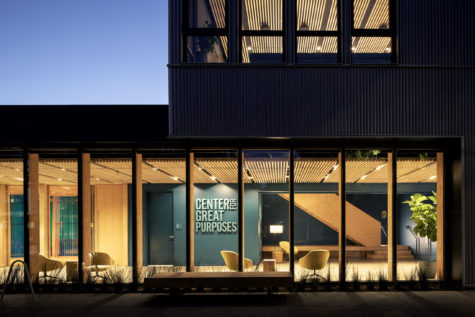
The Think Wood Studio Spotlight series highlights top wood projects from leading firms’ portfolios to inspire others in the design community to follow suit in both mass timber and light-frame design and construction. The highly visual series is one of Think Wood’s most downloaded resources and is a prized placement for firms, which then promote the series on their own social media channels—increasing Think Wood’s exposure and reach among new and different audiences.
Think Wood’s latest Studio Spotlight covers Portland- and Los Angeles-based design firm and mass timber champion LEVER Architecture. From innovative housing and commercial office developments to education and civic architecture, LEVER has helped pioneer the expanded use of mass timber across the United States through an increased focus on low-carbon construction and design.
In 2020 and 2022, LEVER was recognized by Fast Company as one of the world’s most innovative companies for making environmentally friendly mass timber projects a reality through testing and design. Most recently, LEVER, along with developer Adre, was one of six winners of the SLB/USDA 2022 Mass Timber Competition: Building to Net-Zero Carbon for their Killingsworth Project, an 18,780-square-foot community-centric office building in Portland, Oregon.

“You can think of mass timber as a dramatic transformation of a naturally renewable, organic material. It seems so basic and common, yet you’re turning this material into something sublime in a very economical way. That’s what I get really excited about when it comes to mass timber—this sort of unexpected tectonic exploration, using a fundamental, centuries-old building material.”
—Thomas Robinson, Founding Principal at LEVER Architecture
Read LEVER Architecture’s Studio Spotlight today.
The AWC Taps New Leadership Focusing on Codes & Regulations

The AWC has promoted Philip Line, P.E.,to Vice President of Codes & Regulations following the retirement of Kenneth Bland. Phil has been with the AWC for 26 years and has led the development and acceptance of design provisions for wood construction through the AWC’s consensus standards committees and by participatingin the ICC code development process and Evaluation Service product evaluation hearings. A civil engineer by training, Phil was recently recognized with an Excellence Award from the National Institute of Building Sciences’ Building Seismic Safety Council and was inducted as a member of the Virginia Tech Civil Engineering Academy of Distinguished Alumni.
Industry News
The State of the Nation’s Housing
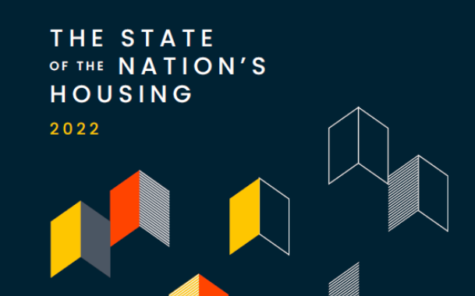
The Joint Center for Housing Studies of Harvard University recently released its anticipated State of the Nation’s Housing 2022 report. Following consecutive years of tremendous growth, Harvard’s analysts believe that the housing market is now at an inflection point, and higher interest rates are cooling the market.
High prices and affordability remain dominant issues for prospective homebuyers and renters alike, particularly for those in lower-income brackets. Home price appreciation reached 20.6% in March 2022, the biggest jump recorded in the last three decades, and over two-thirds of U.S. markets hit their own record high levels of appreciation over the past year. Meanwhile, rents nationwide were up 12% in the first quarter of 2022, with some metro areas seeing increases of over 20%.
High prices and higher interest rates are combining to increase barriers to homebuying for many first-time and middle-income buyers, with, for example, monthly mortgage payments rising by more than $600 for median-priced homes. Inflation is also dimming the economic prospects of many lower-income families even further, as they now work to stretch their dollar to cover higher housing, food, and gas prices.
Despite housing demand being at an inflection point, Harvard’s analysts believe the near-term outlook is still largely positive, aided by low unemployment and strong wage growth. Single-family home starts hit 1.1 million in 2021, exceeding the million-unit mark for the first time in over a decade. Multifamily starts hit a 30-year high, though supply chain issues have lengthened construction times. Analysts are optimistic this strong pipeline of new housing plus higher interest rates will help to slow the rate of price increases.
Two ongoing areas of risk are the need for fiscal policymakers to cool inflation without causing a recession and to put forth policies and programs that expand homeownership, which hinge on affordability.
Commenting on the 2022 report in Builder’s Daily, John McManus notes that ensuring affordable, accessible housing to current and future generations is a persistent and multidimensional issue. To solve the issue both from a housing standpoint as well as from sustainability and resiliency standpoints, we need more collaboration and creativity across jurisdictions, sectors, and markets.
Access the Joint Center’s full report and interactive maps and data here, and read McManus’s commentary here.
Monthly Housing Report Shows Large Jump in Active Listings
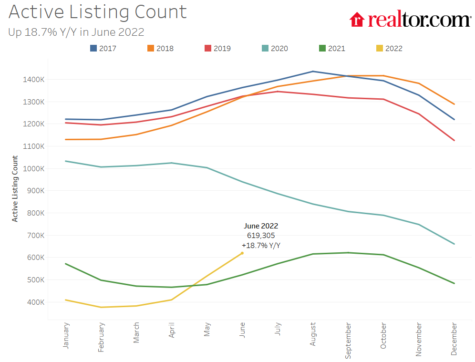
In its June 2022 Monthly Housing Market Trends Report, Realtor.com reported the national inventory of homes for sale increased in June by 18.7% compared with the year prior, the largest increase in the data’s history. Even with this jump, Realtor.com’s data indicates that overall inventory is still significantly lower than it was in both June 2019 and especially June 2020.
Similar to the Joint Center for Housing Studies of Harvard University’s finding, Realtor.com notes that housing remains expensive, with the June national median list price coming in at $450,000, up 16.9% compared with June 2021 and up 31.4% compared with June 2020. The market also remains fast paced, with a typical home spending 32 days on the market in June 2022.
Read more about housing trends here.
Proposed National Juneteenth Museum Features Stunning Timber Design
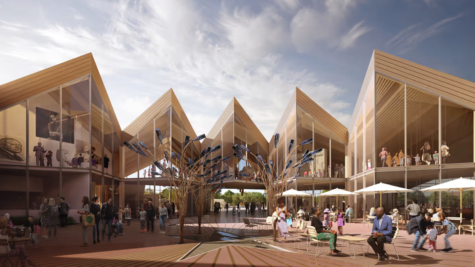
The Bjarke Ingels Group (BIG) has revealed plans for the new National Juneteenth Museum, which will be located in Fort Worth, Texas. Designed in collaboration with local architecture firm KAI, the 50,000-square-foot museum will be laid out in a striking, undulating star-like shape with gabled rooftops and constructed using sustainable mass timber.
The $70 million project will include gallery and exhibition spaces, a business incubator, food hall, stage, and theater. Construction is set to begin in 2023, and the museum will open in time for Juneteenth 2024.
Read more about the National Juneteenth Museum and see renderings here.
With Code Change, California Embraces Tall Wood
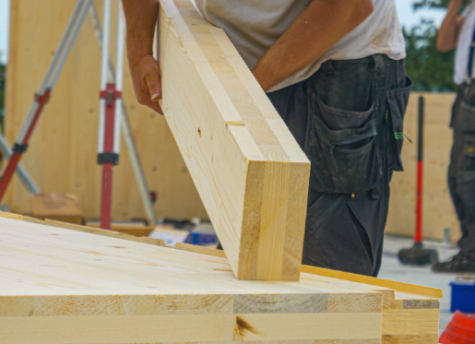
ConstructConnect covered California’s recent adoption of the International Building Code’s tall wood provisions that allow for mass timber buildings up to 18 stories tall. California is no stranger to mass timber, having broken ground or completed 82 mass timber buildings by March 2022, with another 125 mass timber projects in design. Several completed projects were enabled by the California Government Operations Agency’s 2020 mass timber building competition, which awarded a half-million dollars in grant funding to projects that demonstrate mass timber’s potential as a viable building solution in the state.
Competition winners included:
- The four-story, 107,000-square-foot California College of the Arts Campus Unification Project in San Francisco, which was constructed using CLT and glulam.
- The Fifth, a 77,190-square-foot, 14-story multifamily and affordable housing building in LA, which was built with nail-laminated timber, glulam, and plywood.
- The 109,000-square-foot Orange County Sanitation District’s steel-timber hybrid headquarters building.
- The 31,000-square-foot Sunnydale Community Center in San Francisco, which was built using CLT and glulam and integrates numerous elements of biophilic design.
The article quotes Bill Parsons, chief operating officer of WoodWorks, as saying, “We anticipate an increase in tall wood projects in California as a way to address housing needs with more sustainable construction, and because of mass timber’s performance, aesthetic, biophilic attributes, and installation speed.”
Read more about California’s adoption of mass timber here.
Concrete Podium Reduces Opportunity to Maximize Carbon Reduction
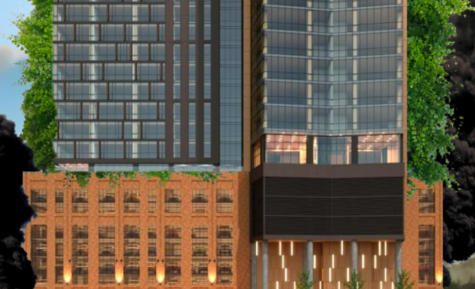
Writing in NextSTL, contributor and housing developer Richard Bose took aim at a recently announced plan to build a 22-story mass timber tower over a seven-story concrete podium in downtown St. Louis. While Bose praises the incorporation of mass timber for its sustainability benefits, he notes that the inclusion of the concrete podium—and its use to house over 350 parking spaces—implicitly cuts into the project’s purported carbon and sustainability benefits.
Bose quotes the development team in noting that, by using mass timber, the building will store around 3,000 metric tons of CO2 and will yield a net gain of 6,370 metric tons of avoided emissions. Unfortunately, the reinforced concrete podium undercuts some of those carbon savings even before factoring in the emissions associated with vehicle use.
Read more from Bose here.
Global Emissions From Concrete Doubled Over Past Two Decades

The Associated Press has reported that concrete’s carbon dioxide emissions have doubled in the last 20 years (and tripled since 1992), making it a leading source of global carbon pollution. In 2021, worldwide emissions from making cement generated almost 2.6 billion metric tons of carbon dioxide, up from 1.2 billion metric tons in 2002. Concrete is responsible for more than 7% of global carbon emissions.
Concrete’s precipitous rise in emissions is driven by greater demand, particularly in China, and an increase in concrete’s carbon intensity, or how much pollution is emitted per ton.
A Stanford University climate scientist, Rob Jackson, notes that “cement emissions have grown faster than most other carbon sources. . . . Our primary focus needs to be on fossil fuel use because that’s where most emissions come from; I don’t think cement is on most policymakers’ radar.”
Read more here.
Pittsburgh Developer Chooses Wood Over Steel to Reduce Carbon Footprint
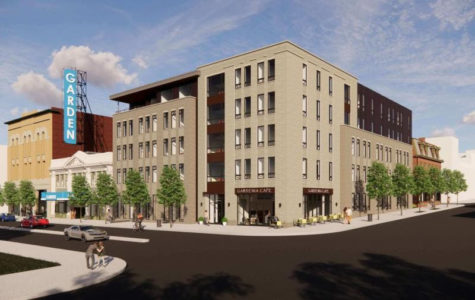
Pittsburgh-based Trek Development Group and Q Development have prioritized the inclusion of mass timber in 6 West North, their new five-story, multifamily project in Pittsburgh, to capture wood’s sustainability, biophilic, and aesthetic benefits. The project will feature a hybrid building system that includes CLT floors and exposed ceilings.
Once completed in early 2023, Trek believes the 6 West North project will be among the first buildings—if not the first—to use CLT in the Pittsburgh area, and the company is optimistic it will use it again.
Read more about the project here.
Wood Towers to Enhance Wind Turbines’ Carbon Benefits
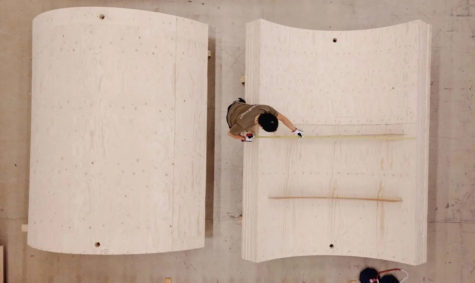
Wood products company Stora Enso and lamination experts at Modvion are teaming to develop a scalable, repeatable wooden tower design for use as part of wind turbines. Modvion previously developed a 30-meter wood tower for wind turbines in Sweden in collaboration with the Swedish Wind Power Technology Centre and Chalmers University of Technology.
Modvion’s current effort involves a modular design and an ambition to build at least a 150-meter tower, as the taller the turbine, the more efficiently it can harvest wind. By way of comparison, the average height of terrestrial wind turbines in the United States was 90 meters in 2020.
Modvion and Stora Enso are prioritizing wood for its low embedded emissions, especially compared with concrete and steel, and its light weight, which lends to easier transport and faster assembly. Establishing a supply chain will be a key additional intervention that will support the firms to broadly commercialize and market their towers.
Read more about this innovative new wood application here.
Insights on the Competition
British Concrete Lobby Questions Wood’s Carbon Benefits
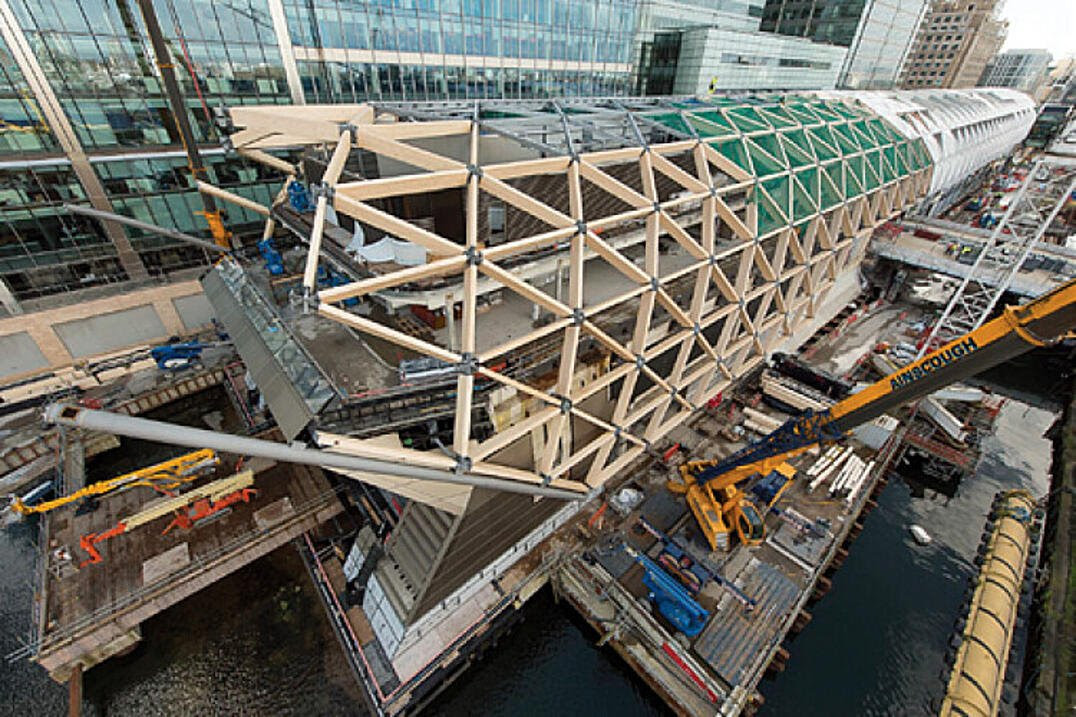
The UK’s Construction Index reports that the concrete industry, via the British Association of Reinforcement (BAR), recently published a new report titled “Is Cross Laminated Timber a potential Trojan Horse?” In the report, the BAR calls CLT a flammable and environmentally damaging “chemical cocktail” and suggests that specifiers should be dubious of CLT’s claimed benefits relating to carbon.
David Hopkins, chief executive of Timber Development UK, working on behalf of the British wood products’ industry, offered the counterpoint: “This report from BAR really brings nothing new to the table other than a desperate attempt to smear a sustainable construction material by those sectors which have a less than positive tale to tell about their environmental impact. . . . There are already fully verified environmental product declarations behind all timber construction products which consider the whole supply chain. This means the impacts of timber products are measured, assessed, and verified by independent experts from forest to factory to operational building—right through to the product’s end of life. . . . Rather than a constructive attempt to find solutions to the climate crisis, they [BAR] would rather waste time dreaming up strawman arguments like this report because they know they cannot compete in a market with a greater focus on sustainability.”
Read more about both parties’ positions here.
Industry Resources
Virginia Tech's Monthly Housing Report
This monthly housing commentary report is a free service of Virginia Tech and is intended to help one gauge future business activity in the U.S. housing market.
May 2022 Reports (released in July 2022)
Part A: May Housing Commentary
Part B: May Economic Conditions


